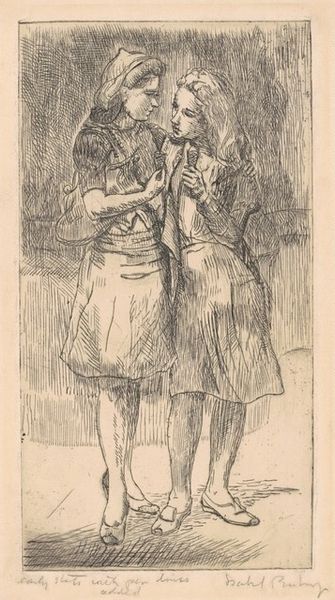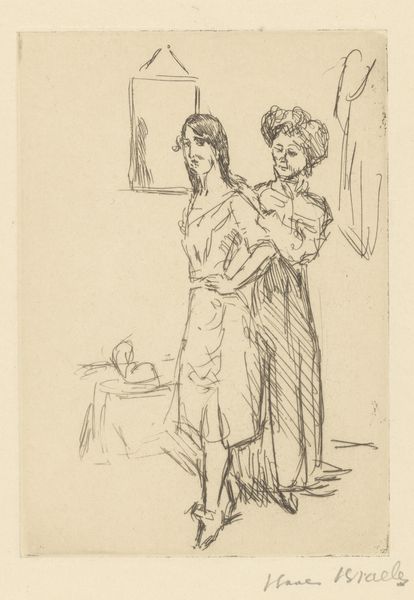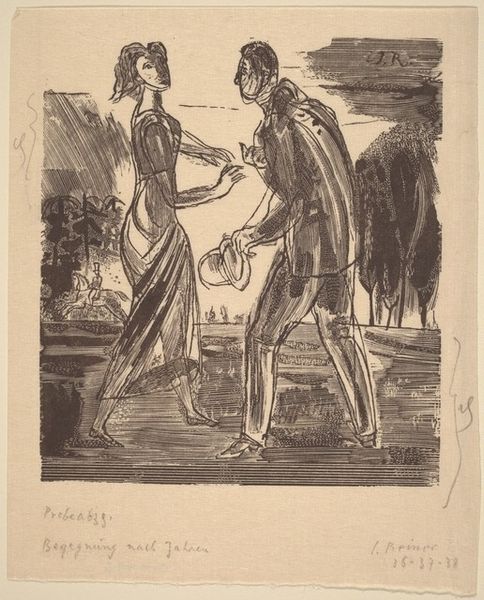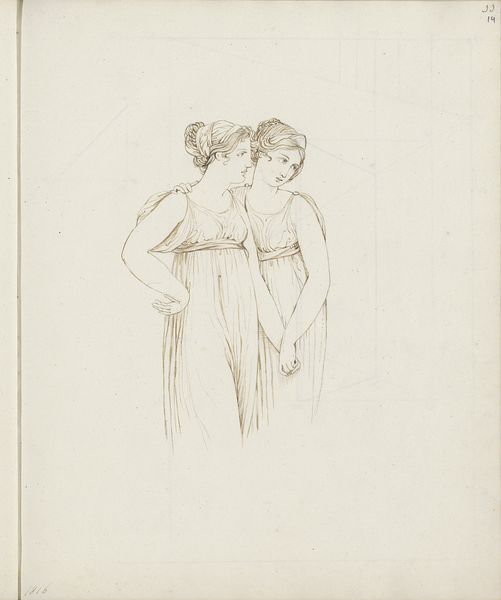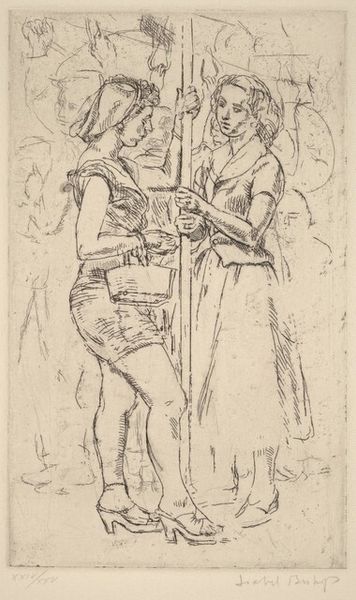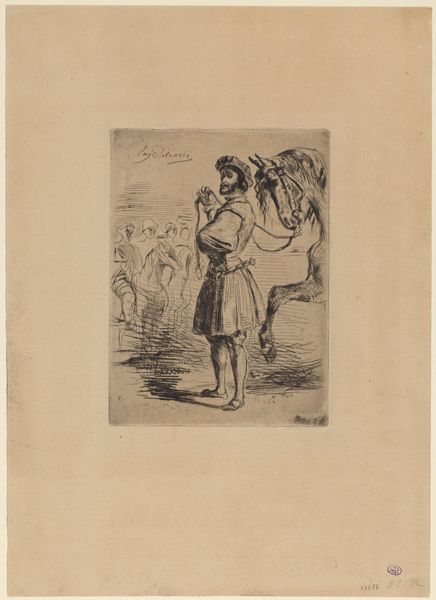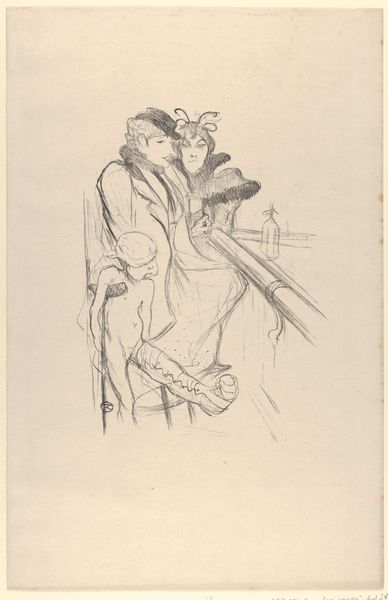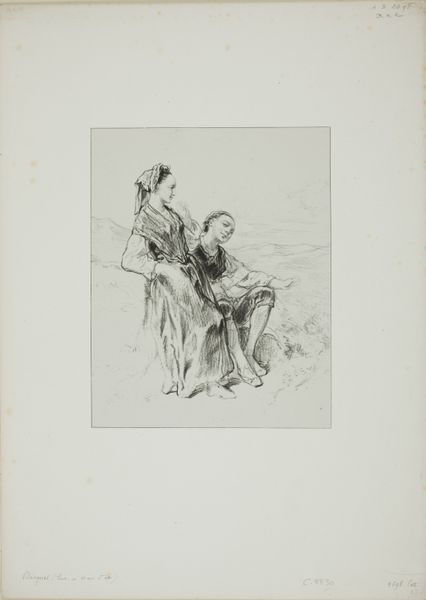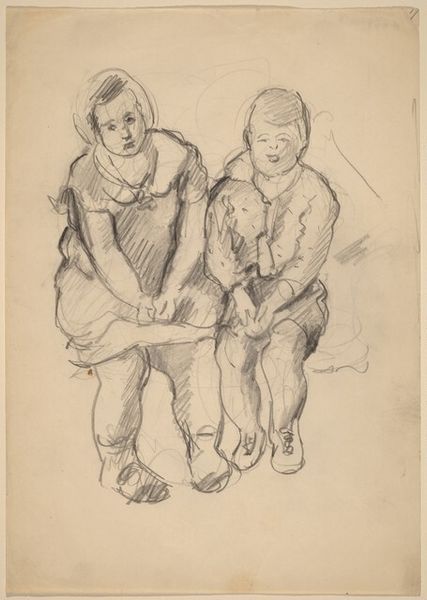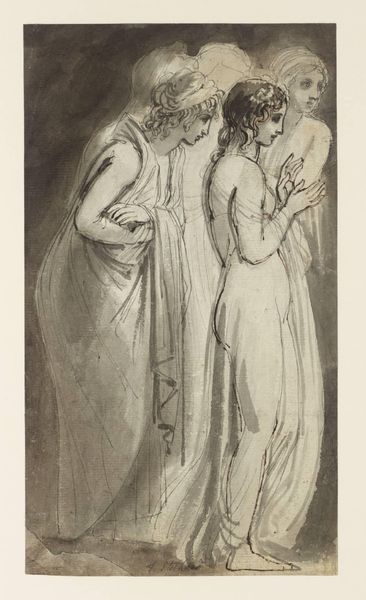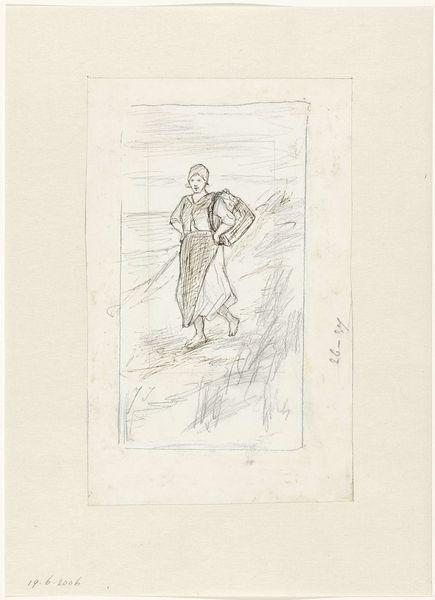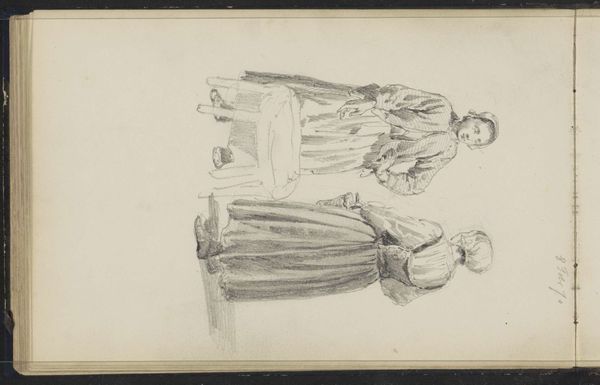![Study for "Two Girls Outdoors" [recto] by Isabel Bishop](/_next/image?url=https%3A%2F%2Fd2w8kbdekdi1gv.cloudfront.net%2FeyJidWNrZXQiOiAiYXJ0ZXJhLWltYWdlcy1idWNrZXQiLCAia2V5IjogImFydHdvcmtzLzk5MWRjMzYwLTZkY2ItNDEzZC1hNGM1LTBkNGMyYzhjNjc5My85OTFkYzM2MC02ZGNiLTQxM2QtYTRjNS0wZDRjMmM4YzY3OTNfZnVsbC5qcGciLCAiZWRpdHMiOiB7InJlc2l6ZSI6IHsid2lkdGgiOiAxOTIwLCAiaGVpZ2h0IjogMTkyMCwgImZpdCI6ICJpbnNpZGUifX19&w=1080&q=75)
drawing, print, paper, ink
#
drawing
# print
#
paper
#
ink
#
ink drawing experimentation
#
pen-ink sketch
#
sketchbook drawing
#
genre-painting
Dimensions: image: 23.81 × 17.15 cm (9 3/8 × 6 3/4 in.) sheet: 36.99 × 26.35 cm (14 9/16 × 10 3/8 in.)
Copyright: National Gallery of Art: CC0 1.0
Editor: Here we have Isabel Bishop’s "Study for 'Two Girls Outdoors' " from 1944, an ink drawing printed on paper. It's such an unassuming sketch, really, capturing these women in a casual moment. What can you tell us about Bishop's choice of materials here? Curator: Well, let's consider what ink and paper represented in 1944. During wartime, resources were often diverted to military production. A readily available and affordable medium like ink on paper would have been incredibly practical. How does that influence your perspective of the artwork? Editor: So, rather than luxurious oils, this was about accessibility? It speaks to a kind of democratic impulse, depicting everyday women using readily available materials. What does it suggest about the market she was reaching out to, or the spaces in which she exhibited? Curator: Precisely. Think about it - printmaking also democratizes the image, making it accessible to a broader audience. Was Bishop intentionally subverting the expectations associated with 'high art' by embracing these 'lower' materials and processes? Did that reflect her political inclinations, maybe aligning with leftist sympathies popular at the time? Editor: That reframes my entire understanding. I was initially seeing a simple, intimate snapshot, but the context of resource scarcity and broader consumption makes it more deliberate. Curator: Exactly. Now, considering that Bishop was deeply invested in accurately depicting women workers on lunch breaks in New York, would it change how you think about this drawing, a "Study of Two Girls Outdoors"? Could it also mean something about social and class issues through the representation and portrayal of women workers? Editor: Definitely. Now I see it as more than just a preliminary study. It’s an object deeply entwined with its time, a testament to Bishop’s process and the material conditions she was operating within. I had not realized the importance of printmaking's potential democratizing impact, that art can go beyond a pretty painting. Curator: It's a vital point: art isn't born in a vacuum. Examining materials and methods brings socio-economic realities into focus, shifting the artwork's significance in an informative light.
Comments
No comments
Be the first to comment and join the conversation on the ultimate creative platform.
